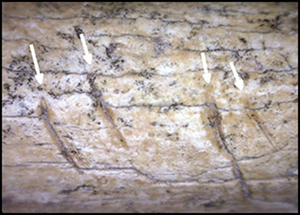No CrossRef data available.
Article contents
Disarticulation, evisceration and excarnation: Neolithic mortuary practices at Dingsishan, southern China
Published online by Cambridge University Press: 16 April 2024
Abstract

The diversity of human mortuary practices and treatments in prehistory is widely recognised, but our understanding of the purpose and manner of corpse manipulation in many regions is limited. This article reports on unusual aspects of funerary archaeology at the Neolithic site of Dingsishan, southern China. Anatomical consideration of cutmarks on human bones and the positioning of bodies and body parts within burials suggests that mortuary treatments at this site included strategic and systematic disarticulation, evisceration and excarnation. Rather than signalling social differences, these practices may have resulted from the very practical need to save space.
- Type
- Research Article
- Information
- Copyright
- Copyright © The Author(s), 2024. Published by Cambridge University Press on behalf of Antiquity Publications Ltd




